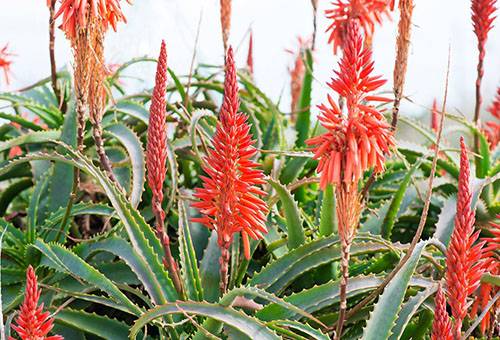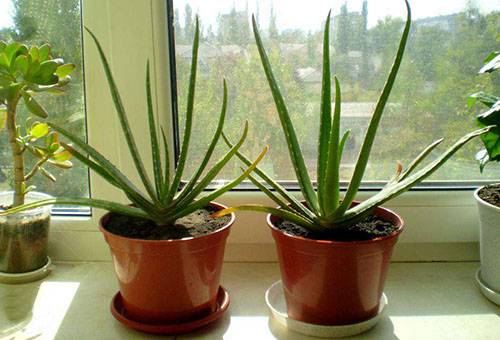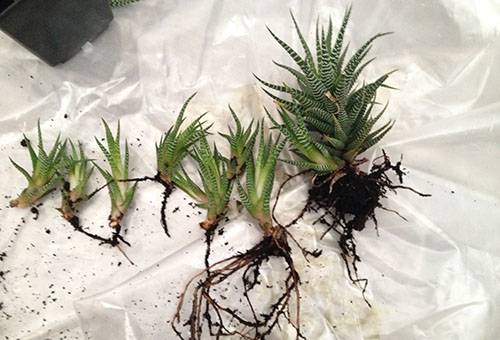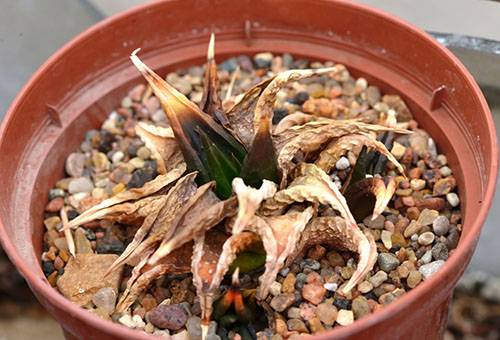Rules for caring for aloe at home
Just literally 15–20 years ago, aloe could be found in every home. Today, unfortunately, this plant is a rare guest on our windowsills. Although it would be worthwhile for every family to grow agave at home, since it is an excellent medicinal and cosmetic product. Moreover, if you know what rules this plant should be cared for at home, then growing aloe will not cause any difficulties.
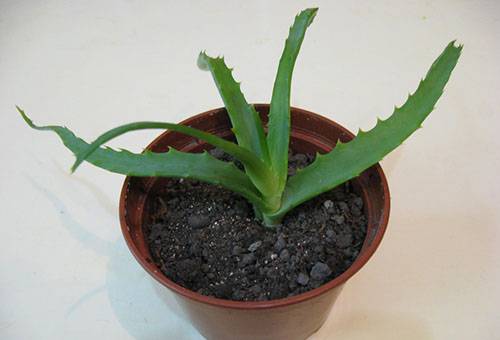
Planting a plant
If you don’t yet have an agave at home, then the first thing you need to do is choose the right seedling. Aloe vera propagates by small cuttings, which even young plants can produce. Such “babies” grow at the base of a large agave and already in appearance resemble an independent plant. Such a specimen already has a small root system, and you can immediately transfer the sprout to a separate “place of residence.” You should choose a cutting that has two or three fleshy leaves, with a stem length of at least five centimeters - this will be extremely easy to care for. But even smaller creatures are already able to take root at home. Therefore, if there are no large cuttings on an adult aloe, and you really want to plant a medicinal plant at home, you can take a small sprout and carefully pull it out of the ground. A cutting that does not yet have roots can also take root. To do this, simply place it in water for several days or immediately stick it in the ground.
The good thing about aloe is that it is very unpretentious. There are no special requirements for the soil in which you will plant the young sprout. Although you can purchase soil intended for cacti. This would be an ideal option for an agave.
Now you choose a suitable pot, fill in the drainage and soil - and you can move the aloe vera. Try to choose a pot so that it is neither too small nor too spacious. Otherwise, in the first case, the agave simply will not grow, and in the second, you will have to wait a very long time for any changes. And it’s good if the pot is made of clay, so the plant’s roots will breathe better and excess moisture will not stagnate.
Advice
Be sure to bake the soil in the oven before planting the plant in it. This simple manipulation will help prevent the appearance of diseases and pests, and it will be much easier to care for the plant.
After planting, you need to choose the right window sill where your aloe vera will live. It is better if it is on the south side of the house, since these plants love warmth and a lot of light.
Watering and fertilizing
Although the agave belongs to the genus of succulents and is very undemanding in terms of living conditions, it still needs to be provided with minimal care at home. The plant easily tolerates drought, but this should not be allowed to happen. After you have planted a young sprout, watering should be frequent - about two to three times a week, then gradually decrease.
The frequency of watering the plant varies depending on the season. In spring and summer, aloe begins to grow rapidly and requires more moisture. During this period, the plant needs to be watered once or twice a week.From autumn to spring, aloe vera goes dormant and can now be watered much less frequently. This should be done as soon as the earthen ball dries out.
Advice
Moisten the soil evenly, avoiding stagnation of water at the roots. Despite all the unpretentiousness of the agave, with a constant large amount of water, the roots of the plant can rot.
Fertilizing the plant at home should be done during the period of active growth, that is, from spring to autumn. Fertilizers should be used that are sold in stores marked “For cacti or succulents.” Or you can use used tea leaves or ground coffee. But before you pour them on top of the ground, be sure to dry them well. Otherwise, you may end up with small black flies, which are then quite difficult to remove.
Light and warmth
Aloe vera comes from warm countries, therefore, this plant will have a hard time withstanding coolness and shade. As already mentioned, it is worth choosing a window that faces the south - there will be ideal conditions for the agave, and caring for it at home will no longer be difficult. But direct sunlight can also be harmful to the plant. Therefore, if you see that aloe leaves have begun to turn yellow, you should either choose a different window sill for it, or organize protection from bright sunlight
The optimal temperature for aloe vera is:
- in summer – about +25 degrees;
- in winter not lower than +12.
Try to maintain a comfortable air temperature for the agave, protect it from hypothermia and drafts. It is not at all difficult to observe these conditions at home, and in return the plant will delight you with rapid growth and, perhaps, even flowering.
Transfer
Agave needs to be periodically transplanted into a larger pot, since its root system develops quite quickly and the plant becomes crowded. If you want your aloe to continue to grow, try to change the plant pots annually for the first five years of the plant's life, then repot every two years. This should be done in the spring, when the plants easily tolerate any manipulation and no longer require intensive care afterwards. If you do not replant the flower, the aloe will simply stop growing.
To transplant aloe vera into a new pot, simply remove the plant and soil from the previous one. Choose a new container that is about 20% larger - this will be the optimal volume. In the new pot, just as during the initial planting, add a layer of drainage, then a little soil (previously calcined in the oven), carefully place the aloe and pour soil on top. Lightly compact the soil with your hands and add the missing amount again. Now water the plant a little, and you can send it to your usual windowsill. With proper care, the procedure will need to be repeated after a year.
What can threaten aloe?
Despite the unpretentiousness of the plant, there are several points that can simply negate the entire cultivation of aloe at home. Therefore, it is worth caring for the plant correctly.
- Root rot. This is the most common aloe disease that appears due to excessive watering. If you see that the leaves of the agave have become too soft, pale, and have begun to fall off, then there is a possibility that the roots have begun to rot. To save aloe, it must be removed from the pot, damaged roots removed, sprinkled with ash or sulfur and replanted in new soil.If you see that the entire root system has already been affected, you will have to cut the cuttings and start growing a new flower. This one can no longer be saved.
- If you notice that aloe leaves have become too pale, then this may indicate a lack of lighting. Everything is simple here - you need to move the pot with the plant to a lighter windowsill.
- Falling leaves of the agave may indicate that he is simply cold. Either there is a stream of frosty air coming from the window, or you are watering the plant with too cool water. To solve the problem, seal all cracks in the frames and try to water the aloe with water at room temperature.
Try to care for the agave in the future, taking these points into account, so that you don’t have to save the plant later.
There are also several pests that can ruin the plant. Fortunately, dealing with them at home is not at all difficult.
- Shchitovka. These insects appear as small brown plaques attached to the plant. To get rid of the pest, you need to wipe the agave with a cloth soaked in vinegar or alcohol. And then you need to spray the flower with an insecticide. A similar product can be easily purchased at any store specializing in products for indoor plants. Just be sure to follow the instructions and ventilate the room well after treatment.
- If you notice that aloe is covered with a “waxy” coating, similar to cotton wool, know that the plant has been infected by a mealybug. This insect is afraid of moisture. Therefore, first, wash the aloe leaves well, wipe it with vinegar or alcohol and place it in a shaded place for a couple of days. Can be treated with a special chemical.And in the future, try not to allow the air to become excessively dry and periodically wipe the agave leaves with a damp cloth. Such minimal care will prevent the appearance of the pest.
- Spider mite. The cobwebs that cover the leaves and small insects that you can find on the back of the leaves will tell you about its appearance. Spraying with garlic tincture, wiping the plant with soapy water or a commercial insecticide helps. In the future, it is worth caring for aloe, avoiding overdrying. Dry air and soil are ideal conditions for the appearance and reproduction of ticks.
In general, aloe vera is a very unpretentious plant that easily tolerates almost any external conditions. If you provide it with the minimum necessary care at home, then you will have a beautiful, powerful plant on your windowsill. And after two years of its life, the leaves will have gained a maximum of useful substances, and the agave can be used for treatment and to maintain beauty.
